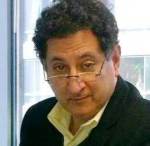Updated
Building Capacity through Partnerships – Jean R. AbiNader
How the International University/Rabat is Supporting Morocco’s Future
Jean R. AbiNader, MATIC
January 29, 2016
The first ever public-private higher education partnership in Morocco, the International University Rabat (IUR), was established in 2010 to accelerate the country’s capacity to undertake world-class research, and to provide specialized offerings for students in partnerships with universities in other countries. It is a unique proposition, in which students who meet the requirements receive dual degrees from both IUR and the partner institution — quite unlike the transplanted foreign campuses in the Gulf. As its homepage notes, “Our University established the first public-private partnership in the field of higher education. This partnership enables the IUR to achieve all its goals of excellence, training, research and to contribute to the socio-economic development of the Kingdom and the region.”
US universities currently allied with IUR are Mississippi State University (MSU), Georgia Tech, and the Sivananthan Labs at the University of Illinois/Chicago. With MSU and Georgia Tech, initial programs are in various fields of mechanical engineering – aeronautical and automotive in particular. Students take their first three years of study at IUR, in English, with at least 30% of their faculty coming from the partner institution. Students who complete the requirements then move to the US campus for their final year and automatic entry into the Masters degree programs when they complete their final year.
As importantly to IUR, the partnerships provide faculty exchanges, training in teaching modalities and technologies, opportunities to participate in professional conferences and meetings, and platforms for common research activities. This is already paying benefits: IUR had logged 14 registered patents by the end of 2015.
IUR focuses on meeting Morocco’s professional needs for today’s and tomorrow’s labor force. There is no better example of this than the newest partnership with Sivananthan Labs, a premier research and development facility embedded in the University of Illinois Chicago campus, and with operations across the US. Working in high technology fields ranging from detection devices to bio-medical research, Sivananthan Labs will bring its solar energy expertise to IUR faculty and students, a critical skill set for Morocco’s world-class solar and renewable energy projects.
The partnerships philosophy was a founding principle of IUR, as was the acquisition of high literacy in English as the premier language of technology. Also critical is the notion of dual degrees, so that students understand the commitment and intensity of enrolling at IUR. Starting from a base of study abroad programs, IUR’s leadership quickly realized that students would require more experience in the US if its mission was to be realized. And the university will continue to expand its partnerships to enlarge opportunities for additional areas of study and research and making itself a resource for the region.
Today, there are more than 400 students from the EU, and 2300 full time students, 800 of whom are on scholarship. An important dimension of IUR is its focus on being a resource for Africa, providing an institutional and educational link that jointly enriches their academic and scientific communities. As the website mentions, “The International University of Rabat aspires to be a key player in the development of the knowledge economy, particularly in Morocco and in Africa in general. Open onto the world, the UIR conveys universal values of excellence, solidarity and equity.”
Most importantly, IUR practices its international approach to education in all of its majors. English is the language of instruction in most of the schools, especially the engineering and science fields. Business majors may start in French, and their last two years are in English. All students, undergraduate and graduate, whether in the partnership programs or not, spend at least one semester in a study abroad program to broaden their educational experience.
When I spoke with IUR about their future plans, they noted that the current capacity is 4000 students and the goal is 5000 students by 2020. They are growing quite selectively to ensure that the fields of study and research match the growing and evolving needs of the country. Next in line are medical faculties including public health, dentistry, and hospital administration. The school is looking to its partnership with Georgia Tech to help craft a diverse agriculture concentration, from seeds to sustainability. All this and it has first class athletic facilities as well!
The enthusiasm of school officials is quite engaging. IUR is a pioneer and a leader in moving Morocco into the next tier of higher education and research. If you want to find out more, check out their website.
